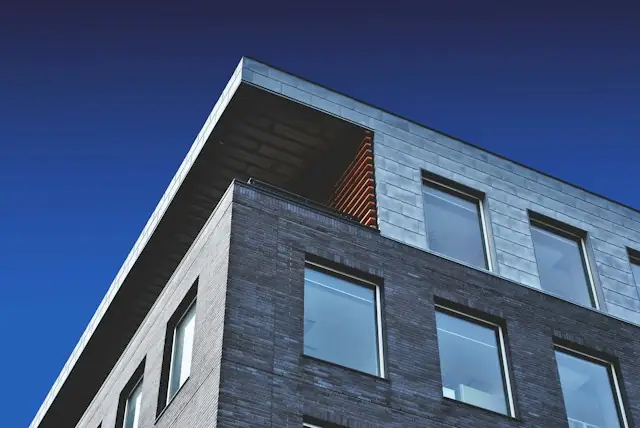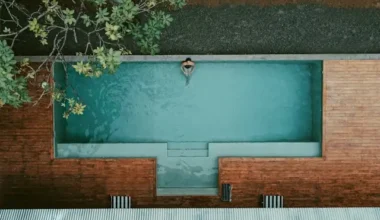In the realm of house construction in Crete, a fascinating synergy between tradition and modernity unfolds. Nestled between the Aegean and the Libyan Sea, Crete’s housing landscape mirrors a thoughtful convergence of age-old cultural influences and cutting-edge construction practices.
This exploration delves into Crete’s dedication to sustainable living, incorporation of advanced technologies, and the seamless blending of traditional Cretan elements with contemporary designs.
Sustainable Architecture for House Construction in Crete
In the midst of Crete’s enchanting landscapes, a sustainable revolution is reshaping house construction trends. Architects and builders are prioritizing eco-friendly practices, utilizing locally-sourced materials and integrating energy-efficient designs, making house construction in Crete a beacon of environmental consciousness.
Sustainable architecture is at the forefront of house construction in Crete, Greece, as the island embraces environmentally conscious practices to preserve its natural beauty. Architects and builders are leading a transformative shift towards eco-friendly construction materials, energy-efficient designs, and renewable energy sources.
The use of locally-sourced materials not only minimizes the environmental impact but also establishes a strong connection between the structures and the island’s rich cultural heritage.

Prioritizing Environmental Harmony
In the pursuit of sustainable house construction in Crete, solar panels have become a common sight adorning rooftops, harnessing the abundant sunlight that graces the island throughout the year. These solar installations contribute significantly to reducing the carbon footprint of residential properties.
Moreover, architects are adopting passive design strategies, optimizing the orientation of buildings to maximize natural lighting and ventilation, thereby reducing the reliance on artificial lighting and air conditioning.
The commitment to sustainable architecture in Crete extends beyond individual homes, with the development of eco-friendly communities and neighborhoods that prioritize environmental harmony.
As the demand for sustainable living grows globally, Crete’s dedication to sustainable architecture positions the island as a leader in responsible and forward-thinking construction practices.
By integrating these principles into house construction, Crete not only ensures the longevity of its unique landscapes but also sets an inspiring example for other regions to follow in the pursuit of a more environmentally conscious future.



The Fusion of Tradition and Modernity in Crete’s House Construction
House construction in Crete is witnessing a captivating blend of traditional Cretan elements with modern architectural designs. From incorporating traditional stonework to preserving arches and courtyards, residential structures on the island are becoming a unique synthesis of the old and the new, ensuring a distinctive charm for homeowners.
The marriage of tradition and modernity in house construction in Crete, Greece, is a captivating dance between the past and the future. The island, with its rich cultural heritage, has become a canvas where architects seamlessly blend traditional Cretan elements with contemporary designs.
This harmonious fusion not only pays homage to the island’s history but also creates residences that are both timeless and cutting-edge.
Architects in Crete often incorporate traditional stonework, arches, and courtyards into modern architectural compositions, infusing each structure with a unique character. These elements serve as a bridge connecting the present with the past, offering residents a tangible link to the island’s cultural roots.
Additionally, the use of local materials not only adds authenticity to the constructions but also supports the sustainability of the region.
Smart Homes and Technology Integration in House Construction in Crete
The allure of modern living is seamlessly woven into the fabric of house construction in Crete through the integration of smart home technology. Homeowners now experience a futuristic touch with advanced automation systems, controlling lighting, security, and energy usage with a simple touch on their smartphones.
Smart homes represent a transformative integration of technology into our daily lives, enhancing convenience, efficiency, and overall living experience.
These modern dwellings are equipped with a network of interconnected devices and systems that can be controlled and monitored remotely, often through a central hub or smartphone application. Smart home technology encompasses a diverse range of functionalities, including automated lighting, climate control, security systems, and entertainment setups.

With the ability to customize and program these devices, homeowners can create personalized environments that cater to their preferences and routines. Beyond convenience, smart homes also contribute to energy conservation by optimizing resource usage, such as through intelligent thermostats and energy-efficient lighting.
Passive Houses in Crete, Greece
Passive Houses Embrace Sustainable Living: A notable trend shaping the future of construction in Crete is the rise of Passive Houses. These residences prioritize energy efficiency and sustainability, employing advanced insulation and ventilation systems.
Passive Houses in Crete not only contribute to reducing environmental impact but also provide residents with a comfortable and energy-efficient living environment.
Our Passive House approach empowers us to design spaces that matter. A Passive house is built like any other building. Although a passive house is constructed with almost the same materials, methodologies and standards as a non-passive house, it can dramatically slash heating and cooling energy use by as much as 80-90%.
Most of the Passive House design principles of ARENCOS, integrate value engineering and biophilic principles to establish exceptional energy thermal isolation for the building and ensure a healthy, comfortable, and noiseless interior environment, full of clean, filtered fresh air.

Also, a passive house doesn’t have to look like a spacecraft full of solar panels and off-grid equipment. The most significant parameters of passivity can be tailored to fit different styles of buildings from very modern villas to traditional detached houses and from city-centre apartments to historic apartment buildings.
Seismic Resilience: A Fundamental Aspect of House Construction in Crete
Seismic resilience in house constructions is of paramount importance, particularly in regions with a history of seismic activity, such as Crete island. Given the island’s location in the seismically active Mediterranean region, architects and engineers in Crete prioritize building designs that can withstand the impact of earthquakes.

Utilizing flexible building materials and construction techniques, including reinforced concrete and steel structures, helps ensure that homes on Crete can absorb and dissipate seismic energy without suffering catastrophic damage. Incorporating base isolators, moment-resisting frames, and shear walls in building designs further enhances the seismic resilience of structures on the island.
Adherence to strict building codes tailored to seismic zones, regular inspections, and proactive retrofitting measures are crucial aspects of promoting the safety and longevity of houses in Crete, contributing to a more resilient built environment in the face of seismic challenges.
Epilogue
In the ever-evolving landscape of house construction trends in Crete, Greece, seismic resilience remains a focal point. Architects and builders in the region are increasingly integrating innovative seismic-resistant technologies into their designs, reflecting a commitment to ensuring the safety and durability of homes.
Beyond seismic considerations, there is also a growing emphasis on sustainable construction practices, with a focus on energy-efficient materials and renewable energy sources.
Traditional architectural elements, rooted in the rich history of Crete, are being skillfully blended with contemporary designs to create homes that harmonize with both the island’s cultural heritage and the demands of modern living.
Additionally, the incorporation of smart home technologies is gaining traction, providing residents with greater control over their living environments.
As the construction industry in Crete evolves, a holistic approach that combines resilience, sustainability, and cultural aesthetics defines the current trends shaping the housing landscape on this captivating Greek island.
ARENCOS
ARENCOS is a Chania-based architectural and engineering firm with a focus on construction and project management excellence in Crete, Greece. Every construction project we deliver is an opportunity for us to bring our creativity and critical thinking to solve problems, innovate and work together with our clients and beyond.








